El arte gráfico vectorial es muy importante en la industria del bordado., conectando el mundo del diseño digital con el producto bordado final. Este tipo de arte crea suaves., diseños escalables que mantienen su calidad sin importar el tamaño, haciéndolo perfecto para bordar.
A diferencia de las imágenes normales, Los diseños vectoriales no pierden claridad cuando se les cambia el tamaño., que significa logotipos, texto, y los patrones intrincados lucen nítidos y profesionales en cualquier tejido.. Usando arte vectorial, los bordadores pueden trabajar más rápido, hacer ediciones fácilmente, and produce high-quality results that match their clients’; necesidades exactas.
Desde personalizar artículos hasta crear prendas de marca., Los diseños vectoriales permiten creatividad y precisión., haciéndolos esenciales para cualquier persona en bordado moderno..
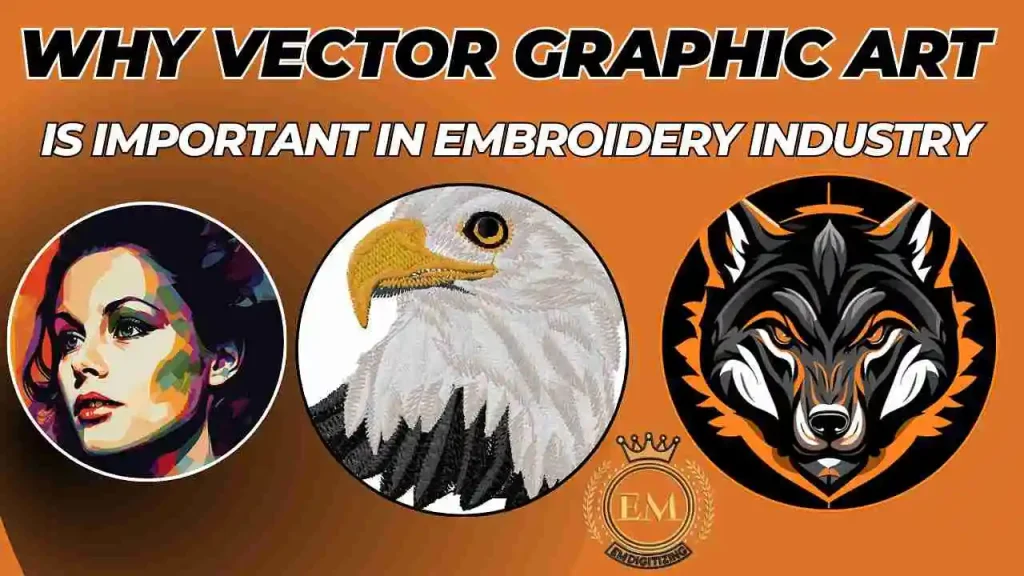
Por qué el arte gráfico vectorial es importante en la industria del bordado?
¿Qué es el arte gráfico vectorial??
Es un tipo de obra de arte digital que utiliza ecuaciones matemáticas para crear imágenes., compuesto por puntos, líneas, y formas en lugar de píxeles. Este método permite que los archivos vectoriales sean infinitamente escalables sin perder calidad., haciéndolos ideales para diversas aplicaciones, incluyendo logotipos, ilustraciones, y diseños destinados a grandes formatos como vallas publicitarias o pequeños formatos como bordados.
Por lo general, se crean en programas de software como Adobe Illustrator o CorelDRAW y se guardan en formatos como SVG., EPS, o IA, que conservan la calidad y editabilidad del diseño en diferentes plataformas y dispositivos.
Beneficios clave del uso de gráficos vectoriales en bordado
El arte vectorial ofrece importantes ventajas en la industria del bordado, permitiendo alta calidad, escalable, y diseños fácilmente editables. Estos son algunos de los principales beneficios.:
- Alta calidad y escalabilidad
- Precisión en los detalles
- Facilidad de personalización y ediciones
- Compatibilidad de archivos con el software de bordado
- Costuras consistentes y precisas
1. Alta calidad y escalabilidad
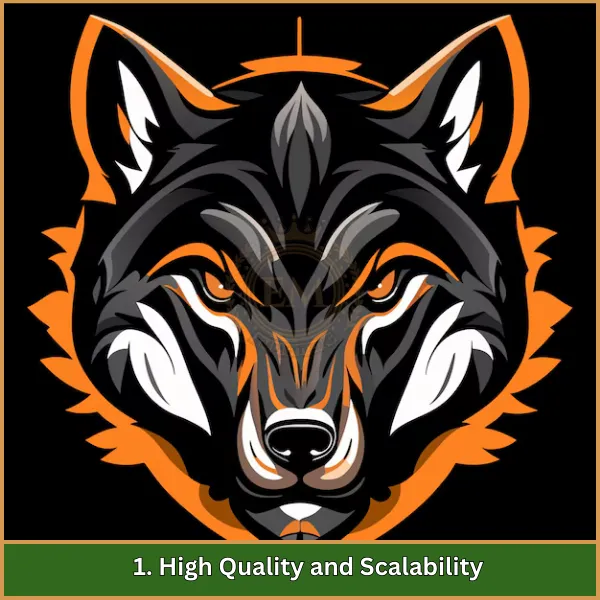
Una de las mayores ventajas de arte vectorial de diseño gráfico es su escalabilidad. Dado que los gráficos vectoriales se basan en ecuaciones matemáticas, se pueden cambiar de tamaño a cualquier dimensión sin perder claridad ni pixelarse. Esta característica es crucial en el bordado., donde los diseños a menudo necesitan ampliarse o reducirse para adaptarse a diferentes áreas de la tela, asegurando que incluso los detalles más pequeños permanezcan nítidos y claros.
2. Precisión en los detalles

Los gráficos vectoriales artísticos permiten detalles intrincados que son ideales para trabajos de bordado.. Las líneas y formas precisas del arte vectorial se pueden convertir en puntadas con precisión., permitiendo capturar diseños complejos, como logotipos o patrones detallados, con alta precisión. Este nivel de detalle mejora la calidad del bordado final., especialmente para diseños que requieren bordes afilados y bordes definidos.
3. Facilidad de personalización y ediciones
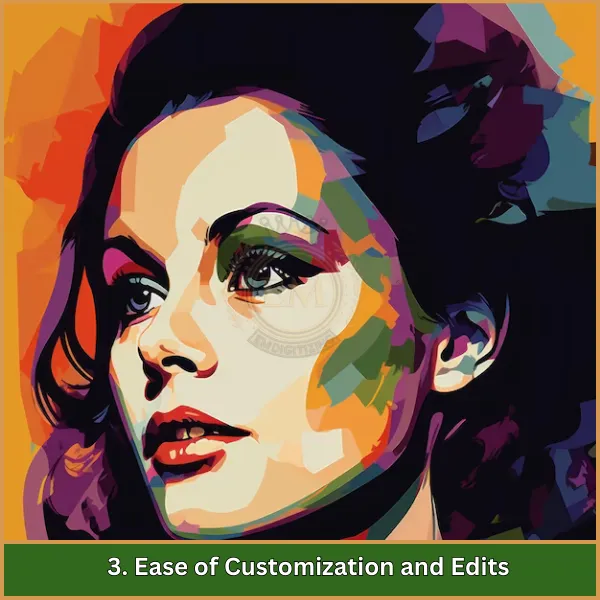
Los archivos vectoriales son altamente editables, Permitir a los diseñadores modificar los colores., formas, y tamaños sin afectar la calidad general del diseño. Esta flexibilidad es especialmente útil en el bordado., donde los clientes pueden solicitar modificaciones o personalizaciones. Los diseñadores pueden adaptar rápidamente archivos vectoriales para satisfacer necesidades específicas, Hacer que el proceso de bordado sea más eficiente y responda a las demandas del cliente..
4. Compatibilidad de archivos con el software de bordado
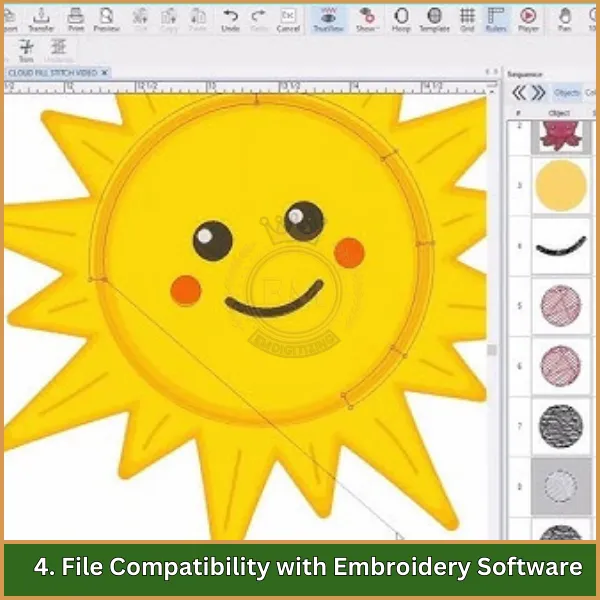
Archivos vectoriales, como los de SVG, EPS, o formatos AI, son compatibles con la mayoría de los programas de digitalización de bordados. Esta compatibilidad garantiza que los diseños se puedan importar y convertir fácilmente a formatos de bordado como DST o PES.. El uso de archivos vectoriales compatibles simplifica el proceso de digitalización y ayuda a garantizar que el resultado final refleje con precisión el diseño original..
5. Costuras consistentes y precisas
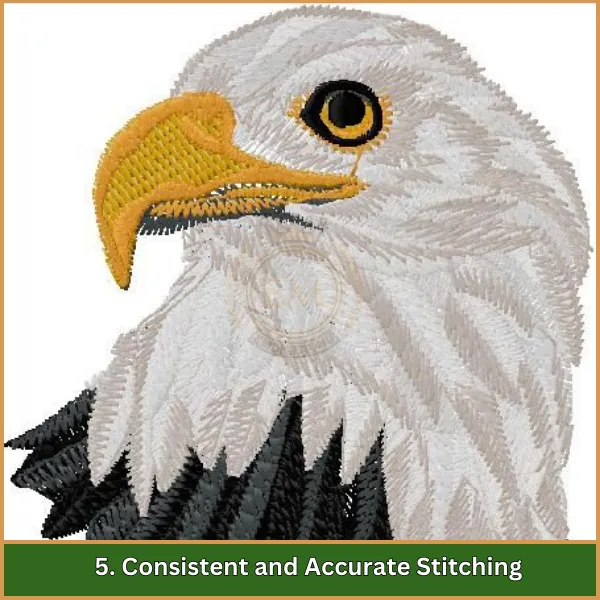
Cuando el arte gráfico vectorial es digitalizado para bordar, se traduce en patrones de puntadas consistentes en varias aplicaciones. Dado que los elementos de diseño en archivos vectoriales están definidos matemáticamente, la máquina de bordar puede seguir los caminos exactos, produciendo costuras uniformes y precisas. Esta consistencia es esencial para mantener la calidad., especialmente cuando se producen artículos bordados a granel.
Tipos de diseños de bordado creados con arte vectorial
Usando arte vectorial en bordado abre una amplia gama de posibilidades de diseño. A continuación se muestran algunos tipos comunes de diseños de bordado que a menudo se crean con arte vectorial.:
1. Bordado de logotipo
Los gráficos de arte vectorial son ideales para diseños de logotipos porque conservan líneas nítidas., formas, y colores, Garantizar que los logotipos de las marcas permanezcan nítidos y de aspecto profesional en los productos bordados..
2. Monogramas e iniciales
El arte gráfico vectorial permite letras precisas y estilos complejos., haciéndolo perfecto para monogramas e iniciales., que son populares en proyectos de bordado personales y profesionales..
3. Patrones y texturas complejos
Patrones y texturas detallados., incluyendo flores, formas geométricas, y diseños abstractos, se puede convertir fácilmente a partir de arte vectorial, manteniendo altos niveles de detalle en el bordado.
4. Mascotas y personajes
Mascotas y personajes bordados., especialmente para equipos o marcas, Benefíciese de la capacidad del arte vectorial para capturar características detalladas y tamaños escalables sin pérdida de calidad..
5. Diseños basados en texto
Citas, nombres, o frases promocionales frecuentemente se diseñan en formato vectorial para bordar, permitiendo un fácil escalado, edición, y precisión de fuente.
Mejores prácticas para utilizar gráficos vectoriales en bordado
El uso de gráficos y arte vectorial para el bordado requiere una cuidadosa atención a los detalles para garantizar que los diseños se traduzcan bien en puntadas.. Seguir estas mejores prácticas le ayudará a lograr resultados de bordado precisos y de alta calidad..
- Elija el formato de archivo correcto: Utilice formatos de archivos vectoriales compatibles, como SVG, EPS, o IA, para garantizar una fácil conversión al software de bordado.
- Simplifique diseños complejos: Evite detalles demasiado complejos que tal vez no se traduzcan bien en el bordado.; simplificar elementos manteniendo la integridad del diseño.
- Seleccione colores y trazos apropiados: Limite los colores y utilice rellenos sólidos y contornos claros., ya que los degradados o los trazos finos pueden ser difíciles de replicar con precisión para las máquinas de bordar.
- Garantizar la estratificación y agrupación adecuadas: Organice elementos en capas o grupos en el archivo vectorial para facilitar un proceso de digitalización más fácil y eficiente..
- Optimizar para el tamaño del bordado: Ajustar el diseño vectorial al tamaño del bordado.; garantizar que los detalles sean claros y proporcionales, incluso a pequeña escala.
- Utilice bordes claros y definidos: usar claro, Bordes definidos para cada elemento de diseño., ya que estos proporcionan caminos de costura claros para la máquina.
- Ejecución de prueba en tela: Pruebe siempre su sistema basado en vectores. diseño de bordado en la tela deseada para garantizar que el diseño se traslade bien desde la pantalla hasta la costura.
- Mantenga la coherencia en el grosor de la línea: Mantenga el grosor de las líneas constante para garantizar una calidad de puntada uniforme en todo el diseño..
Conclusión
al concluir, El arte gráfico vectorial ha transformado el bordado al brindar la precisión y adaptabilidad esenciales para crear diseños de alta calidad.. Si estás listo para darle vida a tus diseños, EMdigitalizing está aquí para ayudar!
Ofrecemos servicios profesionales de digitalización con un compromiso de calidad., tiempos de respuesta súper rápidos, y tarifas asequibles. Nuestra opción de vista previa le permite revisar su diseño antes de finalizarlo., asegurándose de que sea exactamente lo que imaginó.
Y como cliente por primera vez, disfruta de una exclusiva 50% descuento. Descubre el EMdigitalización diferencia y eleva tu bordado hoy!
